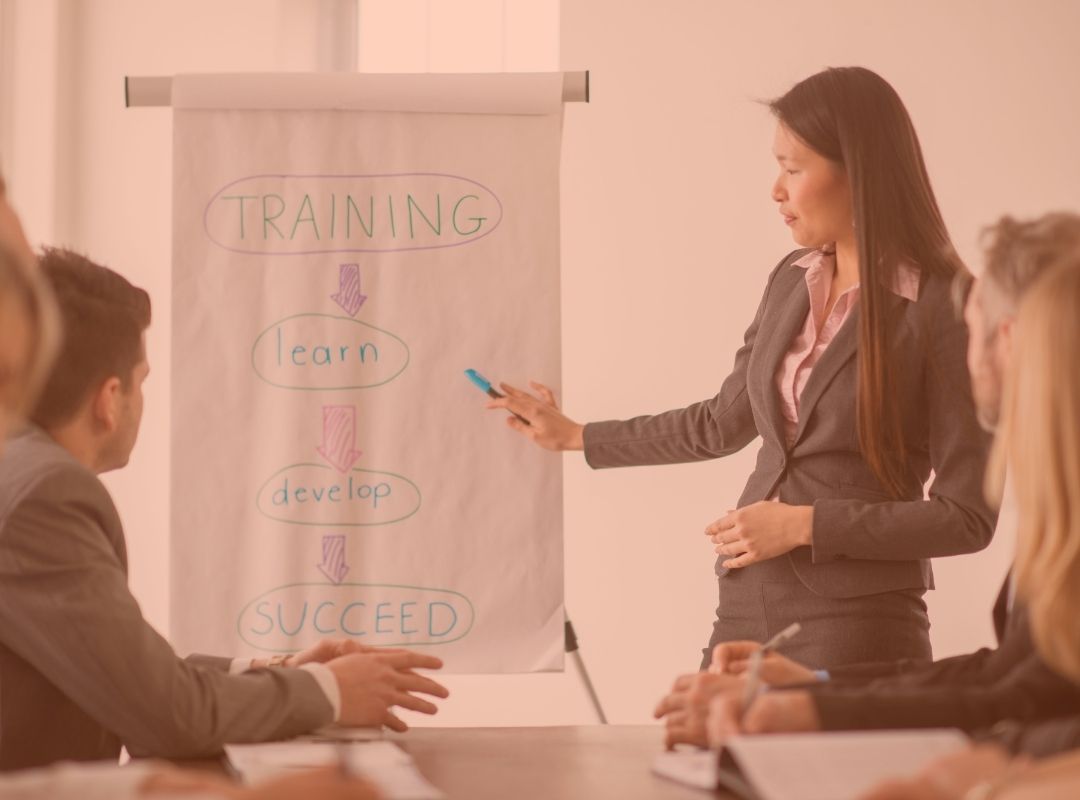How To Use Workplace Design To Increase Employee Productivity And Engagement

Temps de lecture: 5 minutes
There are few things that impact your organization’s success more than your team—and, more specifically, how engaged your team is with their work.
An engaged team is more productive—and performs at a higher level—than a disengaged team. According to 2017 Gallup State of the American Workplace Report, engaged employees have 41 percent lower absenteeism, 10 percent higher customer satisfaction metrics, and are 17 percent more productive than disengaged employees—all of which translates to better business outcomes, with companies with an engaged workforce outperforming competitors with less engaged employees by 202 percent.
Clearly, you want to do everything you can to keep your employees engaged and productive. And one of the ways you can drive that productivity and engagement? Workplace design.
Workplace design is, as the name suggests, the practice of designing a workplace. But it goes beyond choosing the right furniture or color scheme; it’s about designing a space with the features, functionality, layout, and technology that empowers your team’s best work.
So, the question is, how, exactly, do you do that? How can you use workplace design to keep your employees engaged with their work and your company—and ramp up productivity in the process?
Design with your team in mind
When it comes to workplace design, there’s no one-size-fits-all approach. If you want your team to be more engaged and productive, you need to design your workplace in a way that drives engagement and productivity for your specific team.
Moreover, in case your workplace design covers content marketing skills that are highly recommended to be applied, you can always take advantage of CV writing service or Grammarly proofreading online tools that will provide your text part of design with high quality content.
For example, let’s say your organization uses a hybrid work model, with employees working remotely and in the office a few days a week. In order for your team to be productive and engaged, your workplace needs to be designed in a way that supports a hybrid workforce—for example, by eliminating dedicated workstations (which don’t make as much sense when your staff isn’t in the office full-time) and replacing them with a more flexible “hot desk” design, which allows employees to choose from a variety of functional private and communal work spaces on the days they’re in the office.
Also read: [Expert Opinion] Bertrand Duperrin: Toward a Hybrid Work Model
The point is, there’s no magic workplace design solution that will make your team more productive and engaged. Instead, you need to think about what your specific team needs to do their best, most productive work—and then design your workplace in a way that supports that.
Create spaces for collaboration and socialization
Having functional spaces within your office is a key element of workplace design. And if you want your design to drive productivity and engagement within your team, those spaces need to support collaboration—no matter where your team is working.
Also read: How to Develop Collaborative Work in Companies?
For example, according to the Reimagining Human Experience study from JLL, one in two employees expect their offices to have spaces that support collaboration with employees working remotely. So, if you want your office design to make your team more productive, you need to create spaces that allow your in-office and remote employees to work together seamlessly (for example, by outfitting conference rooms with screens and video conferencing software or recording equipment to record important meetings so remote employees can work asynchronously).
But collaboration is only one part of the equation. While employees want to be able to effectively work with their colleagues, they also want to be able to socialize with them. According to the JLL study, employees rank “spaces that foster socialization” as one of their top two expectations around office design—with nearly half (49 percent) saying they expect socialization spaces to boost their experience in the office.
So, in addition to designing spaces that foster collaboration, you also need to create spaces that allow your team to socialize and connect—like a break room with couches, snacks, and space for entertainment (and the technology needed to allow remote employees to join in on the fun).
Also read: How Remote Work Is Redefining the Role of the Office
Design in a way that supports employee health and well-being
According to the JLL study, three in four employees expect their employer to support their health and well-being—and workplace design offers a great opportunity to not only provide that support, but boost employee productivity and engagement in the process.
Designing your workplace to support your employees’ health and well-being can take a variety of forms. For example, you might create a “quiet room” that gives employees the option to step away when they’re feeling stressed or swap up harsh lighting for softer bulbs, which can feel more calming (and help employees better manage their stress levels while they work).
Or, if you want to invest in employee wellness in a way that directly impacts productivity? Try designing more ergonomic workstations. An analysis from the Washington State Department of Labor and Industries found that, on average, investing in workplace ergonomics increased productivity 25 percent, lowered employee turnover by 48 percent, and reduced absenteeism by 58 percent—with the investment paying for itself in less than nine months.
Bottom line? When employees are happy and healthy, they’re also more engaged and productive—and so, if you want to drive productivity and engagement, design your workplace in a way that supports your employees’ health and well-being.
Also read: Changing Work Modes: What Role Does Quality of Work Life Play?
Bring the outdoors indoors
According to the JLL study, one of the top two expectations employees have for their office design is a space with a direct connection to the outdoors. And while not every office space will allow direct access to the outdoors, you can bring the outdoors into your office space—and improve productivity in the process.
All you need? A little greenery.
One 2014 study found that adding plants to the workplace increased productivity by 15 percent. So, if you want your workplace design to have a positive impact on employee productivity, add some greenery.
Find ways to incorporate plants into your work environment—both for employees who work in the office and employees who work remotely. Put plants on individual workstations, in meeting rooms, and communal workspaces. Send plants to your remote employees so they can get a productivity boost when working from home.
*
* *
People are heavily influenced by their environment—including their work environment. But now that you understand workplace design—and how to design your workspace in a way that empowers your team—you can make sure that your organization’s work environment influences your team in a way that makes them more productive and engaged.
Are you looking for other ways to improve the work experience of your employees? Read our article on “How to reinvent the employee experience in the era of hybrid work” to discover more best practices for improving employee engagement and productivity:
–
Author: Deanna deBara






.jpg)
.jpg)


.jpg)

.jpg)


.jpg)











.jpg)




.jpg)



.jpg)

.jpg)



.jpg)








.jpg)

















.jpg)

.jpeg)
.jpeg)












.jpeg)



.jpg)




.jpg)








